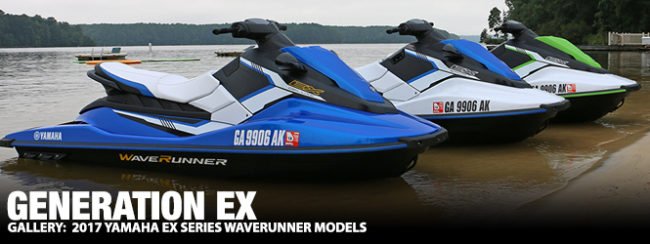
Some of the greatest things we enjoy came from direct competition. Oreo cookies were Nabisco’s answer to Hydrox. The Beatles’ “White Album” came as a direct response to The Beach Boys’ opus record “Pet Sounds.” The “Star Wars” franchise came from George Lucas’ initial desire to direct a new Flash Gordon film. So, in many cases, its all but impossible to evaluate or even appreciate the latter without fully acknowledging prior. This was our thought in coming to weigh the 2017 Yamaha EX Series WaveRunner models: EX, EX Sport and EX Deluxe.
First, in choosing to review all three units simultaneously, we at The Watercraft Journal wanted to illustrate that each of the three units, albeit unique in their packaging, are in total, sequential; not just in pricing and optioning, but in their overall value. Moreover, while Yamaha might not wholly enjoy our doing so, it felt almost willfully ignorant for us not to recognize the giant 450-pound PolyTec gorilla in the room, the Sea-Doo Spark (for which, the EX models are a direct response to).
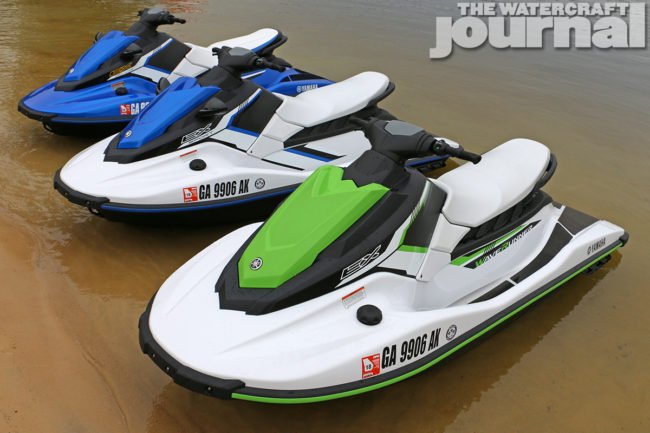
First off, it’s worth noting that since its inception nearly 4 years ago, the Sea-Doo Spark has been an unmitigated success, accounting for 62-perent of all new PWC sold in the 2015 being Value/Economy models (ie. Rec-Lite or Sparks), the single-highest percentile since they began tracking PWC sales. This machine single-handedly blew open the doors of a whole new segment of the PWC market that had gone previously untapped, and Yamaha wanted a part of it. More importantly, the recent upward swing in sales over the past two years was due in large part to an increase in first-time buyers.
With these new buyers in mind, Yamaha opted to glean from the Spark all of the appeal, and correct – in their own words – everything the manufacturer saw wrong with it to offer its own low price point watercraft that maintained Yamaha’s commitment to reliability, durability and fun without sacrificing dependability. It was a tall order, and the biggest obstacle to hurdle was in distinguishing the EX from the competition. And as we see, the EX Series – consisting of the base EX ($6,599), the EX Sport ($7,599) and EX Deluxe ($8,599) – are a careful, measured and many would say conservative response to Sea-Doo’s Spark.
Above: Yamaha developed a separate lower seat base allowing for easy engine access. This also allowed for the EX’s narrow-yet-comfortable one-piece saddle. When service is required, the lower seat base is quickly removed with basic hand tools (see image) to access the entire interior of the WaveRunner.
Reliability was first: how to make a low-cost, lightweight machine that can truly hold up to the rigors of use that Yamaha has balanced their reputation upon. ”We found that reliability is the single most important attribute for all customer segments,” Product Manager Scott Watkins explained to The Watercraft Journal. “Of all the customers who considered buying another brand, a quarter of them chose Yamaha [over the rest] because of our reputation for reliability.” For EX, this meant maintaining a level of top level consistency in its manufacturing.
Watkins explained the process wherein the hull and deck’s compression mold process: “All [EX] WaveRunners are manufactured in a High Compression Molding process [consisting of a two-part compression mold that uses heat and pressure to compress the “High SMC Compression FRP” into a hull – Ed]. That results in better fit and finish; a smooth, paintable finish (giving us those automotive-grade metallic finishes); controlled tolerances and consistent results each and every time. And the process creates no VOC emissions.”
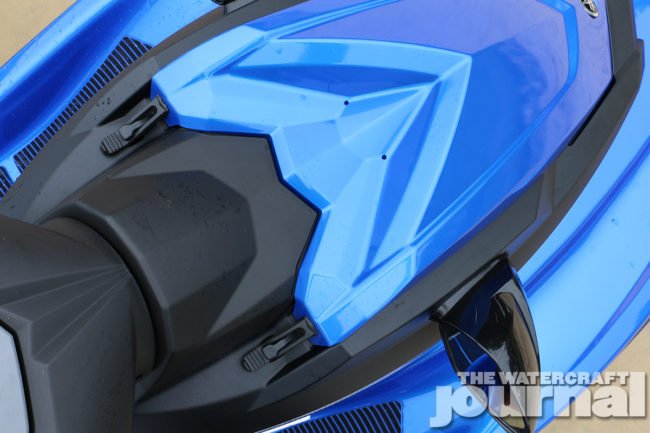
Above: The EX features a reduced and simplified instrument cluster, generous glove box storage (with wet bow stowage and an underseat bin totaling 10-gallons of storage), and wide swim platform.
Next was dependability: based off of the Marine TR-1 engine that received the 2016 NMMA Innovation Award, the EX models are powered by a slightly detuned 100-horsepower EX TR-1. The drop in horsepower is not found in the ECU tune, but mechanically. The changes to the engine are subtle; a lightened flywheel/coupler combination, and redesigned exhaust manifold and muffler. The EX’s unique jet pump is also unique, as when compared to the MY16 V1 pump, the EX 144mm pump weighs 1.8kg less (14kg vs. 15.8kg), and features a redesigned shaft bearing, a combined impeller housing and stator, and completely eliminates the pump bulkhead.
With a 13.2-gallon fuel tank, the EX also touts a 47-percent longer range (in Yamaha’s private testing) than Sea-Doo’s Spark thanks in large part to the manufacturer’s 14-percent superior fuel consumption claim. Stretching to 10-foot, 3-inches long, the EX is noticeably shorter than the next-model-up-the-line 11-foot VX, but only a scant 3-inches longer than the 3-Up Spark’s 120-inch total length. Interestingly enough, the EX units are three-inches more narrow than the Spark (46-inches versus 43-inches).
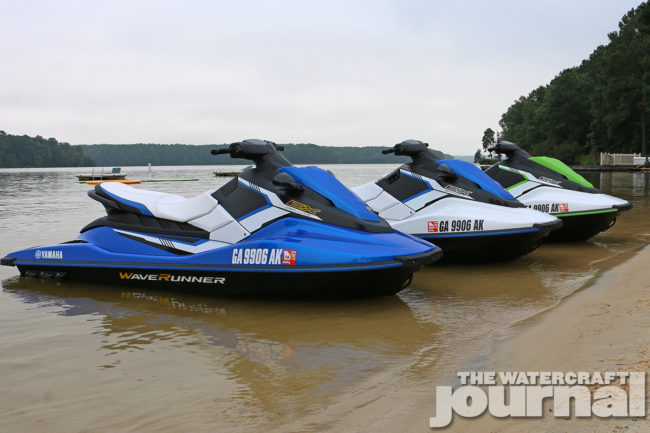
Above: For the individual models, the EX Series is spaced out generously. The base EX comes in Pure White with Green, and is as spartan as expected, including only deck mats, a tow hook and automatic bilge as standard equipment. The EX Sport ups the ante with dual mirrors, a mechanical reverse, a single-sided folding swim step, improved graphics and a color option of either Azure Blue Metallic and White, or all Black. Finally, the EX Deluxe comes with Yamaha’s RiDE reverse and brake, two-tone Hydro-Turf traction mats and two-color “cut and sew” seats, not to mention a livery option of Silver Metallic with Torch Red Metallic, or Azure Blue Metallic.
Yamaha purposefully chose to keep all EX units as 3-passengers, and while that hinders the EX’s appeal from a portion of total Spark sales, its another conscientious move to keep the Yamaha a little more grounded. With a slightly progressive weight scale of 577-, 584- and 599-pounds (EX base, EX Sport and EX Deluxe, respectively) the EX isn’t the featherweight of the PolyTec-hewn Spark, but still respectable as a Rec-Lite segment craft. To keep the pounds off, Yamaha minimized the amount of body parts (fairings, panels, etc.) by incorporating much of the styling cues into the body itself.
Having spent the better part of a year with a Sea-Doo Spark as a long-term project, we were very familiar with the machine’s ins and outs. The EX isn’t as loose or playful as the Spark, and requires slightly more coaxing to powerslide or spinout. The added oomph of the EX TR-1 is enough to propel the EX aptly, but given its heft over the Spark, makes the seat-of-your-pants throttle response nearly equal. While Yamaha advertises a top speed of 50mph for all three tiers of the EX, less-than-ideal conditions during our testing rendered a top speed of 48.2mph (cooler air and a lighter rider will definitely put the EX into the 50mph range).
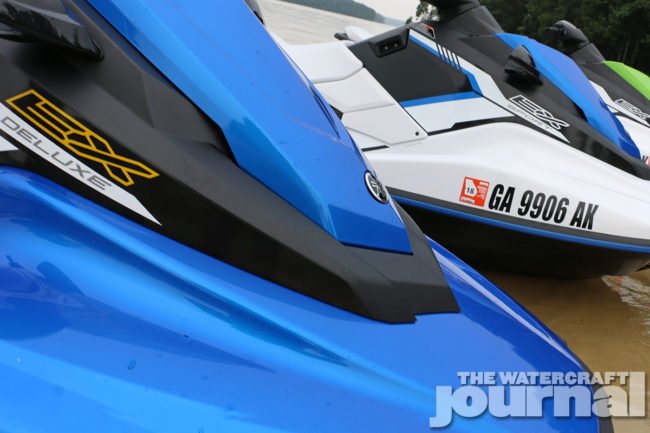
We found the EX Series are more adapt to spirited cruising, careening through narrow channels and tracing the shoreline. It offers a slightly more “grownup” feeling, which can interpreted in however way you see best. We see the merits in both the Spark and EX Series, but they are as distinct from one another in more ways than they are similar. We see the EX being a worthy competitor for new buyers who are looking for a tamer, more stable option to the Spark. Potentially those with younger children, or are looking for a more leisurely ride.
Where there is panache, flair and rowdiness with the Spark, the EX is by no means dowdy, but reserved. We think that is intentional, and will appeal to a lot of folks who were looking for a Rec-lite unit that was a little bit more their cup of tea.


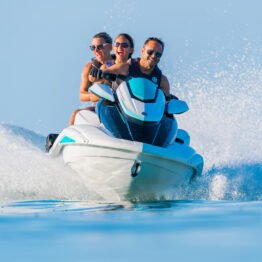







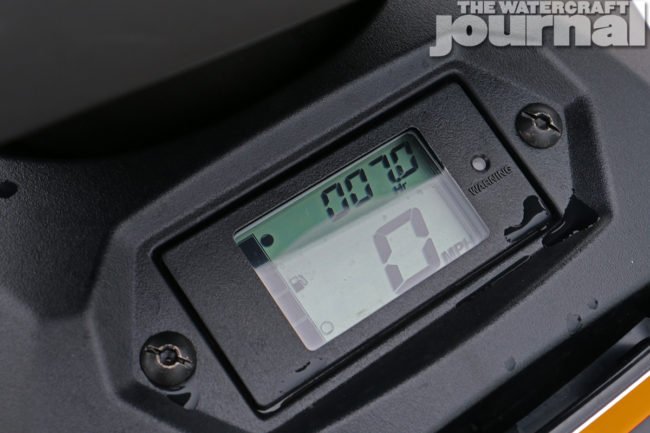
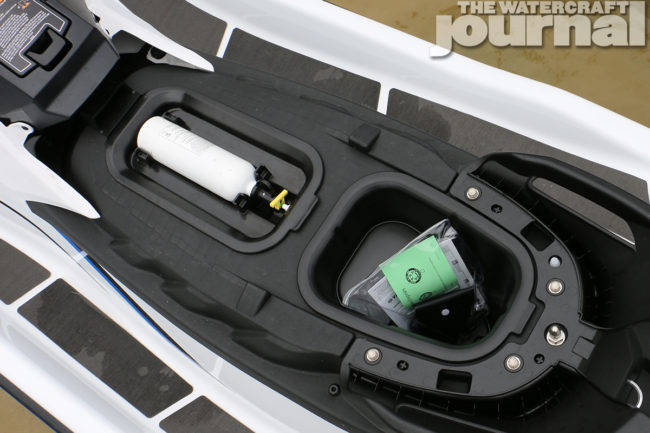


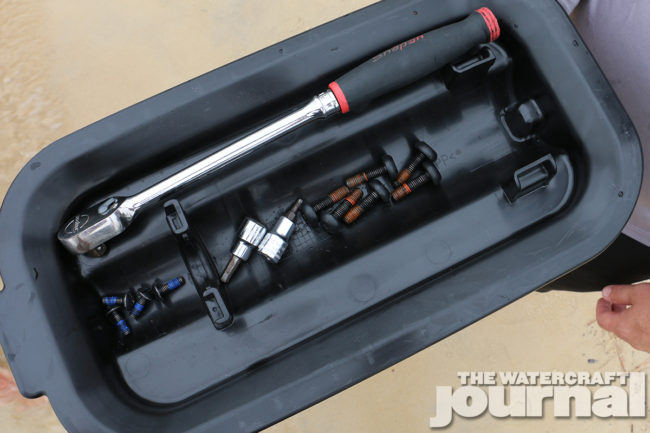
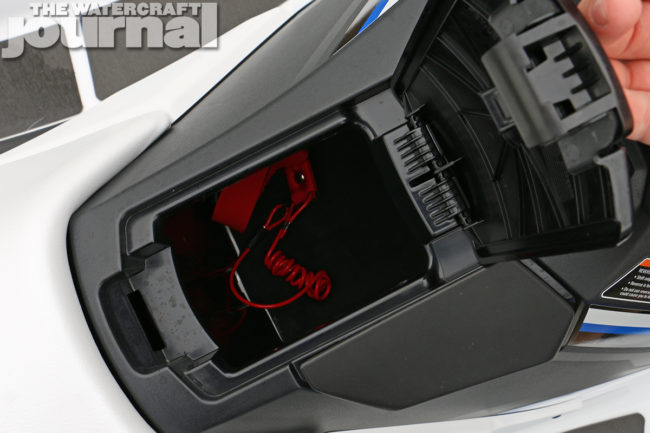

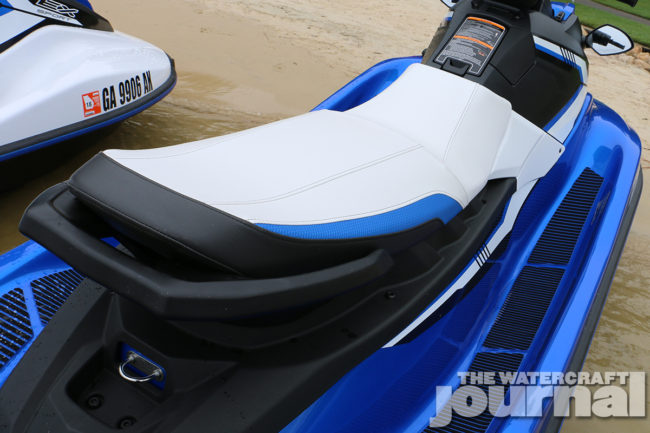
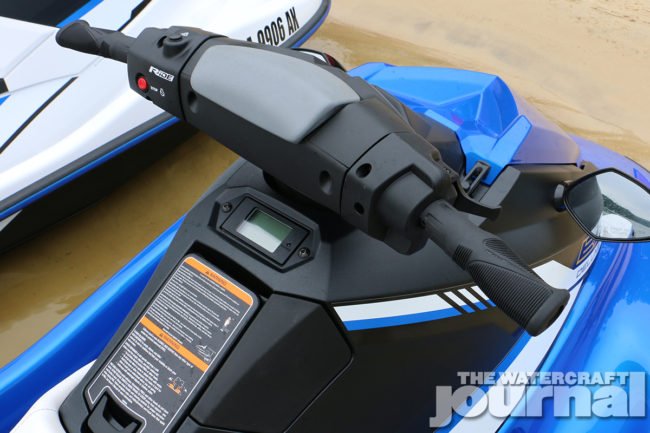
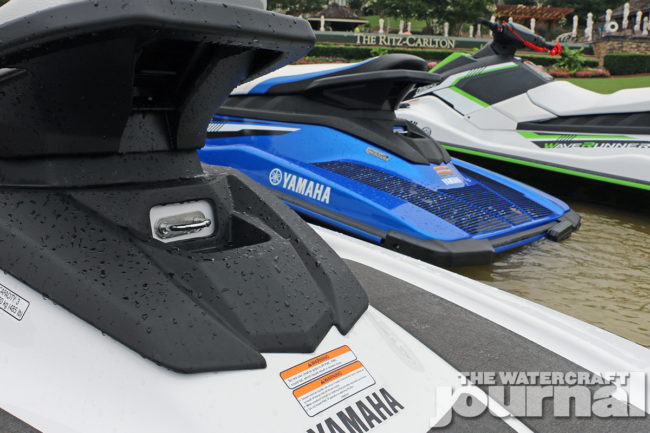
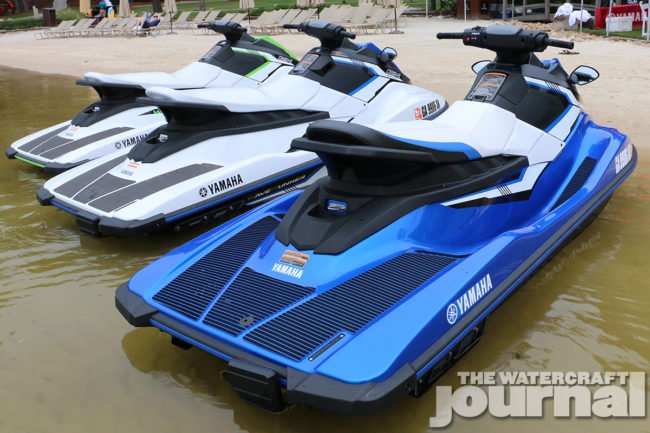

















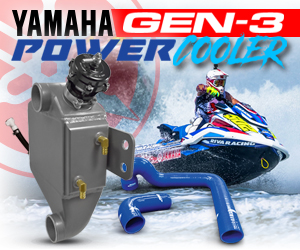



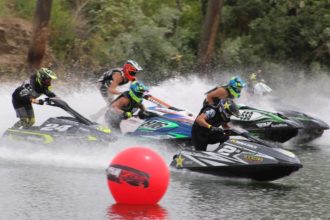


Yamaha missed the mark for me on this one. I’m a Yamaha fan and own an FX Cruiser with the 1.8 and its a great machine, but my 2-seater Spark is a totally unique watercraft and the one I find myself riding more. It’s light, responsive, and tossable in the waves, unlike every other watercraft sold today. When I heard Yamaha was coming out with a competitor and before I saw the final product, I was willing to consider buying one, but not now. 172 pounds heavier, 3-seat configuration only, and $1,600 more? No thanks. It’s not what I’m looking to buy.
Fair enough, but I do recommend you 1) take one out for a ride, 2) consider what Yamaha built and why they did it.
Great post Kevin………..I am in the market and considering buying one of the two. I have a 17 year old boy and a 12 year old girl. They both love the water and we spend our summer on Torch Lake in Michigan. I just cant seem to decide which one to get. I just priced out a new 2016 Spark with the 90hp and IBR. With a cover out the door was $7900. I am trying to get them down to $7500. The EX Deluxe is the most comparable feature for feature and they gave me a price of $9200 out the door. I like the looks of the Yamaha better. I am also concerned about the stability of the Spark. I priced both models out as 3 seaters. I would love to hear your thoughts!
Why on earth is it $9,200 when they MSRP for $8,599?
Buyer beware…purchased a Yamaha EX sport last week , I liked the price and was looking for something to ride with my wife when I didn’t feel like taking the boat out. First trip out , we start from the no wake zone and upon throttle it started making dangerous and arratic turns and would not get on plane . So dangerous we ended up taking it back to the beach . Trouble shooting the problem I took the ski alone out and it performed fine . It came down to weight . I’m a bigger guy and we equaled 415 pounds averaging up. Long story short .. Yamaha told me that was the way it was supposed to perform. Told me to have my wife hold on tighter and not look over the side. (Common sense) and they would document the issue. Traded the ski with .30 min at a 2500 dollar loss and bought a Seadoo. I’ll never buy Yamaha again, I shouldn’t be doing their R&D for them at my expense. They told me to blog it so I am … hope this helps others save the headache.
First time PWC buyer here. Tried out the Yamaha EX at a show and tell, and then a friends Spark about a week later. Just like what the post above said I liked the Spark much more. My 2-seater Spark is a totally unique watercraft and ride it as much as my Seadoo GTR 230. It’s so light that I literally “tell it” what to do, its tossable in the waves, kinda like riding a motorcycle and doing a wheelie with ease. Price was a big selling point and I just had more fun on the Spark.
I now own both Seadoo 2017 Spark 2up and 2017 GTR 230.
a seadoo spark is the biggest piece of shit ever made.
When it comes to reliability – Yamaha Waverunners are 2nd to none. That’s why you see every rental shop renting Yamaha’s.
SeaPoo Pfft, when you see a company selling a engine they don’t even manufacturer, it should be a big red flag for any consumer (good luck with the longevity pal!).
[…] Generation EX: 2017 Yamaha EX Series WaveRunner Models […]